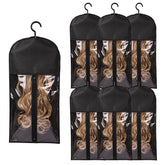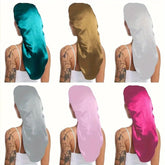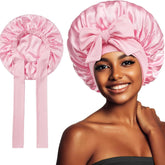Colour melting: the hair trend set to eclipse balayage

Hair stylists and fashion commentators are pointing to "colour melting" as the next major hair‑colour movement to follow balayage. The technique, which blends multiple shades so tones appear to melt together rather than sit in distinct stripes, has been appearing on red carpets and in salon portfolios. Proponents say it delivers a softer, more natural gradation of tone that can suit a wide range of hair textures and personal styles.
What is colour melting?
Colour melting is a colouring technique in which two or more shades are applied and blended seamlessly from root to tip. The aim is to remove visible lines of demarcation and create a gentle transition between darker roots and lighter ends or between contrasting shades. Unlike classic highlights, which place defined streaks of lighter colour through the hair, and unlike traditional balayage, which emphasises hand-painted lighter pieces, colour melting focuses on the blending of adjacent tones so that the shifts appear fluid rather than sectional.
How the technique differs from highlights and balayage
Stylist-led trends can sound similar on the surface, so it helps to understand the practical differences. Colour melting is less about the placement of lighter pieces and more about the tonal integration. Key distinctions include:
- Seamless transitions: colour melting softens the junctions between tones so the eye reads a continuous gradient rather than distinct panels.
- Tonal layering: multiple hues are often used to avoid a flat or monochrome finish and to add depth.
- Customisation: the approach is adapted to an individual's base colour, face shape and hair density, rather than following a formulaic placement.
How stylists create the look
Salons describe the process as technical and time‑intensive: the stylist must choose complementary shades and apply them in a way that eliminates hard lines. Typical elements of the in‑salon process include preparation of the hair's base tone, strategic application of lightener or colour, and meticulous blending at the join points. A finishing gloss or toner is often used to harmonise the palette and add shine. Because the technique prioritises a natural, blended appearance, a thorough consultation and colour mapping are usually part of the appointment.
Care, maintenance and what to expect
Colour melting is often presented as a way to achieve an elevated, lived‑in look. That said, its upkeep depends on the specific colours used and the condition of the hair. Key considerations include:
- Longevity: blended tones can extend the time between full‑colour appointments because regrowth is less obvious than with high‑contrast highlights.
- Aftercare: colour‑protecting shampoos, regular conditioning and periodic glossing/toning visits help maintain the subtle colour shifts and prevent brassiness.
- Suitability: the technique can be adapted for different hair types, but very dark hair may require more sessions to achieve lighter melts without excessive damage.
Because the application demands time and a high degree of skill, professionals caution that appointments may be longer and more costly than simple single‑process colouring. However, many clients and stylists view the trade‑off as worthwhile for a more bespoke outcome and reduced need for frequent touch‑ups.
Why it matters
Colour melting matters for several reasons that extend beyond aesthetics. First, it reflects a continuing shift in hair trends towards looks that combine polish with low visibility of regrowth — consumers want styles that feel natural but refined. Second, the technique affects salon business models: stylists who master colour melting may be able to offer premium, bespoke services that command higher prices and increase client retention. Third, the trend underscores how colourists are responding to consumer demand for healthier‑looking colour; by blending tones and using glosses rather than repeatedly lightening hair, the approach can be kinder to hair structure when executed carefully.
There are also cultural and social drivers at play. Social media and celebrity images accelerate the spread of new looks, but so does a growing preference for personalisation over one‑size‑fits‑all formulas. Colour melting sits neatly between the two: it is visually appealing in photos and adaptable in the salon, which helps explain why stylists and trend watchers are highlighting it now.
Is it right for you?
Colour melting suits clients seeking a soft, dimensional finish that doesn’t reveal harsh lines as hair grows out. It is particularly attractive for people who want a low‑maintenance appearance but still appreciate richness and depth in their colour. That said, anyone considering the look should book a consultation with a colourist to discuss previous chemical history, the desired level of lift and realistic maintenance expectations.
When discussing the technique with a stylist, useful questions include:
- How many shades will you use and why?
- What is the expected time in the chair and likely number of sessions?
- What aftercare will keep the tones looking fresh?







